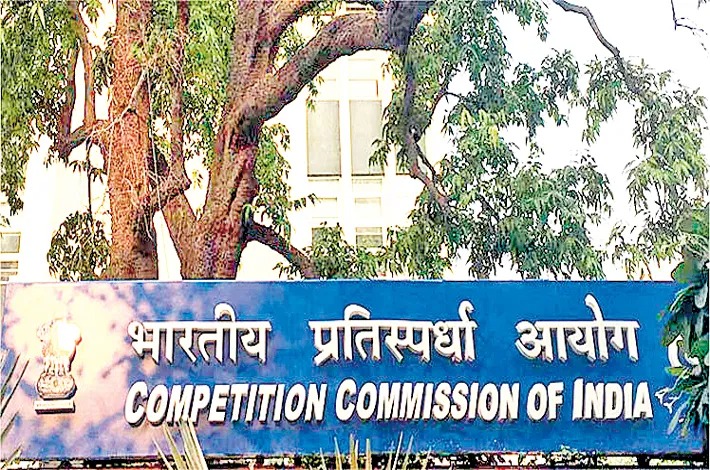Pradeep Nandrajog, J.@mdashWe must express our pain and anguish at the manner in which the impugned order dated 4.11.2009 has been written.
2. A perusal of the order shows that the learned members of the Tribunal who have authored the impugned decision have not appreciated the facts in the correct perspective and have totally misunderstood the law on the subject.
3. Let us first note the relevant facts.
4. The respondent joined service as a Lower Division Clerk under the Ministry of Finance (Defence) in the Defence Accounts department on 27.5.1964. Transferred from Muradnagar to Avadi on 14.11.1980, the respondent did not join and made a representation praying that the order transferring him to Avadi be recalled. His request was rejected. He did not join duty. He continued to remain absent till 25.3.1983, when a charge-sheet was issued to him alleging the misdemeanour of being unauthorizedly absent from duty. The Inquiry Officer submitted a report holding that the charge was not proved. Disciplinary Authority disagreed, but did not furnish the note of disagreement and after supplying the report of the Inquiry Officer levied penalty of compulsory retirement on 17.8.1984. By then, the law on the subject of penning a note of disagreement with the findings of not guilty returned by the Inquiry Officer if not accepted by the Disciplinary Authority, had not been developed. The law stood crystallized when the Supreme Court enunciated, in categorical language, as per the decision reported as
5. Needless to state the applicable Pension Rules envisage grant of pension to an employee who is compulsorily retired, but on having rendered service for the requisite number of years.
6. The repeated reminders sent by the respondent for release of pension went unresponded compelling the respondent to move the High Court of Judicature at Allahabad when he filed WP. No. 40795/1999, stating that being compulsorily retired on 31.8.1994 his repeated representations for release of retiral benefits went unheeded and that he was entitled to pension.
7. Noting that representations sent by the respondent were never responded to, vide order dated 23.9.1994 the writ petition was disposed of by a short order which reads as under:
Heard Sri M.D. Singh Learned Counsel for the petitioner as well as Sri Kamlesh Narain Pandey, learned Standing Counsel for the Union of India. The petitioner was employed as a clerk in the Defence Department in 1964. He was compulsorily retired on 31.08.1984. The petitioner has been making representation after representations for release of retiral benefits. The respondents have been assuring the petitioner, by sending reply that his representations are receiving active consideration. However, no firm communication has been made in spire (sic) of the fact that long five years have elapsed since the order of compulsory retirement was passed.
The Writ Petition is finally disposed of with the direction that the respondent No. 2, Comptroller General of Defence Accounts West Block V, R.K. Puram, New Delhi shall ensure that appropriate speaking and reasoned orders are passed on the pending representations or a fresh one, to be made by the petitioner, within two months from the date of production of a certified copy of this order positively. In case, for any reason, it is found that the petitioner is not entitled to pensionary benefits, the reasons therefore (sic) shall be communicated to the petitioner by registered post.
8. Thereafter, the petitioner passed a detailed order dated 10.1.2000 in which it was held that as per Rule 40 of the CCS (Pension) Rules 1972 qualifying service was 20 years for being entitled to release of pension and since the respondent did not have the requisite service when he was compulsorily retired from service, no pension could be released.
9. The respondent challenged the said order dated 10.1.2000 by filing WP(C) No. 19508/2000 before the High Court of Judicature at Allahabad which was dismissed vide order dated 19.2.2005 holding that the remedy was before the Administrative Tribunal constituted under the Central Administrative Tribunal.
10. This led the respondent to file OA. No. 2909/2005 before the Central Administrative Tribunal, which has been allowed vide impugned order dated 4.11.2009.
11. The Tribunal has held that the order compulsorily retiring respondent was non-est in law for the reason the Disciplinary Authority, while disagreeing with the report of the Inquiry Officer, did not notify the tentative reasons for disagreement before passing the order compulsorily retiring the respondent. The Tribunal further held that an order which is non-est need not be challenged and hence took the view that the respondent would be deemed to be in service till date of retirement on attaining the age of superannuation.
12. The direction issued by the Tribunal is as under:
Resultantly, after hearing both the parties, OA is allowed. Impugned order is set aside. Respondents are directed to deem the applicant to have continued in service till the age of superannuation and the period from dismissal till the date of retirement on superannuation shall be treated as qualifying service for pension but not for other purposes. Respondents by deeming the applicant as holder of a substantive post shall now fix his pension and other benefits and the same shall be disbursed to him within a period of three months from the date of receipt of a copy of this order. No costs.
13. Now, what is an order which is non-est ?
14. We need not make a catalogue of various decisions and suffice would it be to state that decisions obtained by playing fraud upon the Court are treated as non-est/void. Decisions without jurisdiction are treated as void/non est. Erroneous decisions and especially when the error is in the exercise of jurisdiction are treated as wrong decisions and not as void or non-est decisions and such decisions have to be challenged within the period of limitation prescribed.
15. This simple distinction has been ignored by the Tribunal.
16. That apart, the only issue on which the respondent could have litigated was which flowed from the decision dated 23.9.1999 of the Allahabad High Court. Suffice would it be to state that the only issue which survives was whether being compulsorily retired, the respondent was entitled to pension. It was pursuant to the mandate of said decision the order dated 10.1.2000 was passed returning the finding.
Findings - In accordance with Rule 40(1) of CCS (Pension) Rules, the question of grant of not less than two-thirds and not more than full compensation pension arises if pension was admissible on the date of compulsory retirement. Pension was not admissible to Sh. Tyagi on the date of his compulsory retirement from service i.e. 31.8.84 (AN) since he did not complete the required qualifying service of 20 years.
17. Thus, the learned members of the Tribunal had a limited role to play. They had only to determine whether the respondent was entitled to pension on being compulsorily retired and it was not within their domain to decided whether the order compulsorily retiring the respondent passed way back on 17.8.1984 was valid or not.
18. We may conclude by noting that the submission made before us by learned Counsel for the respondent was that a right to claim pension is a recurring and a continuous cause of action and thus the respondent was entitled each month to challenge the order compulsorily retiring him from service. In other words what was urged before us was that it was a case of continuing cause of action accruing each month.
19. The concept of a fresh cause of action and a continuous cause of action was considered in the decision reported as Hole v. Chard Union (1804) 1 Ch 296. In the words of Lord Lindley: "What is a continuous cause of action? Speaking accurately, there is no such thing; but what is called a continuous cause of action is a cause of action which arises from the repetition of acts or omissions of the same kind as that for which the action was brought."
20. In the same decision, Lord A.L. Smith, in a concurrent view said: "If once a cause of action arises, and the acts complained of are continuously repeated, the cause of action continues and goes on de die in diem. It seems to me that there was a connection in the present case between the series of acts before and after the action was brought; they were repeated in succession and became a continuing cause of action. They were an assertion of the same claim - namely, a claim to continue to pour sewage into the stream and a continuance of the same alleged right. In my opinion there was here a continuing cause of action within the meaning of the rule."
21. At home, in the decision reported as
22. Thus, with reference to the claim for pension, if predicated on the plea that the order compulsorily retiring the respondent was wrong and that the same denied the respondent the benefit of pension which respondent would have earned on attaining the age of superannuation, the right accrued when the order compulsorily retiring the respondent was passed. To claim pension on said ground it cannot be said that each month a cause of action accrued afresh or that it is a case of continuing cause of action. However, the plea that treating the order of compulsory retirement as a valid order, yet respondent was entitled to pension, it could be argued that such a claim could be predicated at any point of time for the reason right to receive pension accrued each month till it was specifically repudiated. Such a claim could certainly have been entertained and relief moulded by denying pensionary dues preceding three years when the claim was made for the reason claim preceding three years would be barred by the law of limitation. Needless to state, such a claim could be adjudicated only with reference to the pension rules and not by premising the claim by determining the validity of the order of compulsory retirement.
23. Since the Tribunal has not decided whether the respondent was entitled to pension on being compulsorily retired and this being the only question which the Tribunal had to decide, we dispose of the writ petition quashing the impugned order dated 4.11.2009 and reviving OA. No. 2909/2005 for fresh adjudication by the Tribunal.
24. Needless to state, the Tribunal would treat the order compulsorily retiring the respondent from service as immune from challenge. The Tribunal would decide the limited question whether on being compulsorily retired the respondent is entitled to any pension under the pension rules and if held entitled to the same, with effect from what date.
25. No costs.

